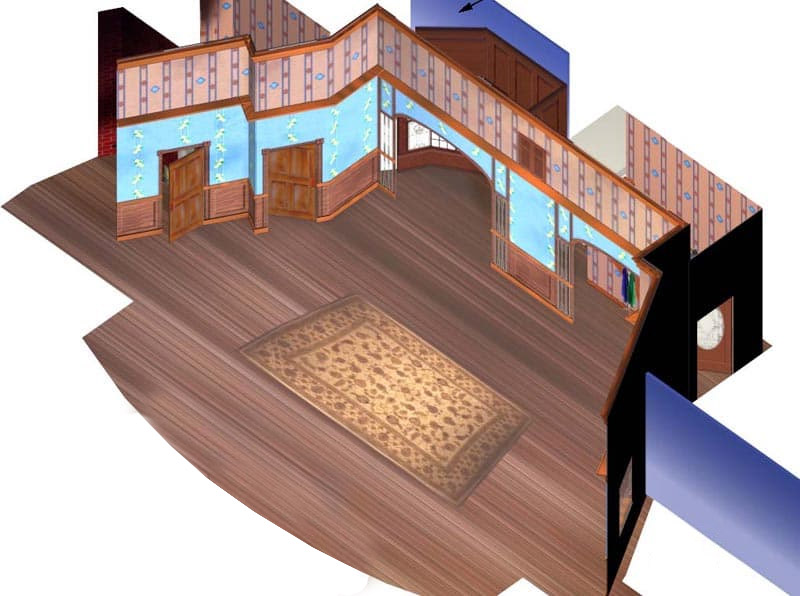Transcript
There’s a common trap that captures some people building scenery – especially novices.
Maybe the drama program is run by a solitary English or Music teacher; someone who does everything for the show.
“Okay, students! We don’t have time for anything fancy. Let’s just get these walls up.”
“There’s so much else to get done, we’re going to keep this simple!”
The flats are assembled in long straight lines. The result is a simple box set. With a lot of braces behind it.
When a door is slammed, the entire wall reacts by swaying and shuddering.
Wallpaper is a go-to because it kind of makes the seams go away.
Somebody maybe adds another hundred braces to the back of the set, time allowing. The braces are necessary to keep everything stable and rigid. The back of the set looks like modern art performed by insane beavers.
But short wall segments that turn corners are more interesting and stable.
Long straight walls require more work backstage and often are less interesting.
Avoiding design choices can make the technical solutions more difficult.
If you regularly turn corners while you plan out walls, the set requires minimal bracing behind it. If you frequently turn corners, seams are easier to deal with, too. A set with lots and lots of corners stands up pretty much by itself. In general, a set with lots of turns in it is more interesting to look at, and more fun for actors.
Corners create places to hide or eavesdrop. They create places to put set props and coats.
Short wall segments make it easier to use stock flats or single sheets of plywood.
There is an architectural element called a “pilaster.” It’s a rectangular column projecting from a wall. These appear all around us in rooms. They often contain vents or ducts. They are a great addition to the front of a wall to make it sturdier. They also let you end a wall cleanly. The wall behind the phone does is a separate piece of scenery.
For this production of Harvey, the pilasters provide structural stability and hide the fact that the walls do not connect.
Sometimes long straight walls are just the right choice. But short wall segments that turn corners are more interesting and stable. Long straight walls require more work backstage and often are less interesting.
Music: “Dub Feral” Kevin MacLeod (incompetech.com)
Licensed under Creative Commons: By Attribution 3.0 License
http://creativecommons.org/licenses/by/3.0/
This video was made for Matt Kizer Design LLC.
© 2019 Matt Kizer. All rights reserved.
